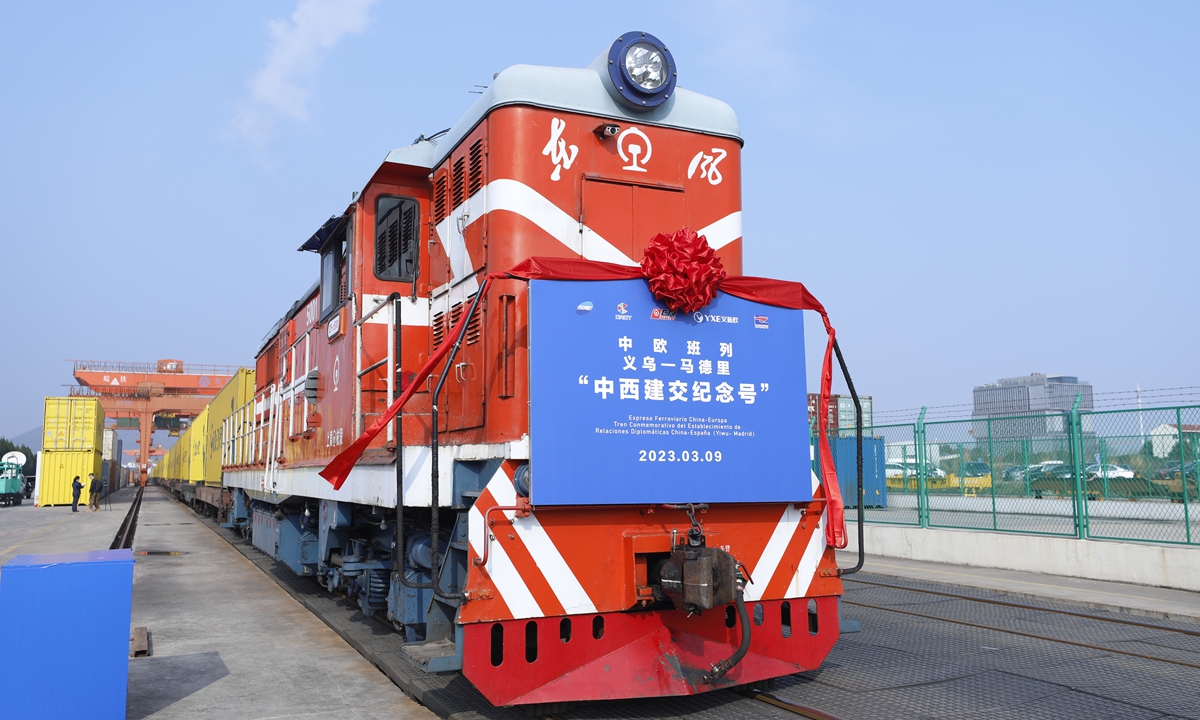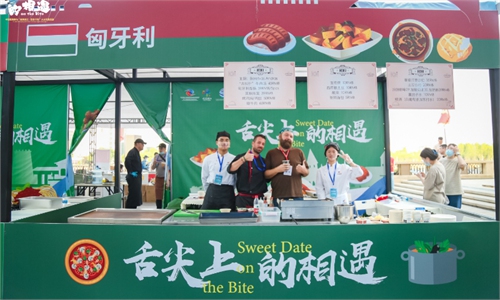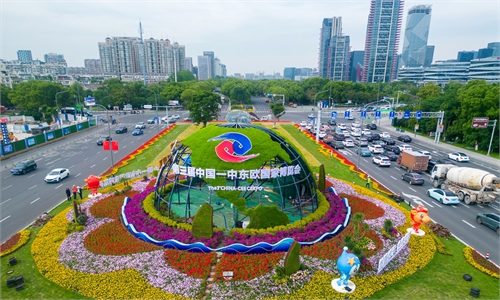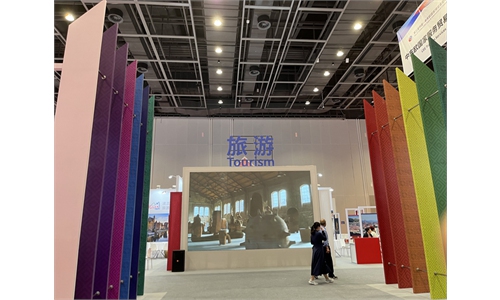China-CEEC logistics cooperation under BRI ensures trade growth despite languishing global economy

A commemorative freight train departs from Yiwu, East China's Zhejiang Province to Madrid, Spain on March 9, 2023. Photo: Courtesy of Yiwu publicity authority
Logistics service providers from the Central and Eastern European Countries (CEECs) are enhancing their ties with the Chinese market under the high-quality development of the Belt and Road Initiative (BRI), ensuring bilateral trade growth despite the sluggish global economy and weakened international trading environment.
At the services trade exhibition area of the ongoing third China-CEEC Expo & International Consumer Goods Fair in Ningbo, East China's Zhejiang Province, 22 ports and logistics service providers gathered, looking forward to finding more partners and clients in the market.
Although it is the first time for the expo to have a specialized services trade area, many of the CEEC-based logistics companies are old friends of the event. "We hope to raise our popularity in the Chinese market through the platform," Dylan Feng, a sales executive of the Ningbo branch of Austrian logistics company Gebrüder Weiss, told the Global Times on Thursday.
Railway shipments through the China-Europe railway express have been growing rapidly in recent years along with the promotion of the BRI, Feng said, noting that it has larger delivery capacity while being cheaper than air transportation.
In 2022, 16,000 China-Europe freight trains were operated, an increase of 9 percent over the previous year. Poland, Hungary, Slovakia and other countries have become key destinations for China-Europe freight trains, Li Fei, China's Vice Minister of Commerce (MOFCOM), told a press conference on May 5.
Another exhibitor who represents Polish air carrier SkyTaxi told the Global Times that the Chinese market has "very very big potential, and that's why we are growing."
"As I said, we're gonna add a few planes," he said, and the carrier is also working on the registration of a new company in China.
On the sideline of the expo, the fifth China (Ningbo) International Shipping Logistics Fair also kicked off with a specialized exhibition area for the CEECs. Industry players from Poland, the Czech Republic, Romania, Slovenia, Serbia, Greece and other CEECs participated in the fair.
Chinese players have also increased investment in the Central and Eastern European region. China-based COSCO Shipping's investment in Piraeus, Greece's largest port, in recent years is a successful example. Piraeus port has now taken a leading position in terms of container throughput in the European region, the Xinhua News Agency reported.
In the meantime, the Central European Trade and Logistics Cooperation Zone in Budapest, Hungary built by China in 2012 has become a two-way interactive platform for Chinese and European enterprises, Xinhua reported.
The Zhoushan Port in Ningbo has launched 14 shipping routes to CEECs. The port's cargo throughput exceeded 1.25 billion tons in 2022, ranking first globally for a 14th consecutive year.
In addition, China and the CEECs have been cooperating on inland river shipping, which is a demonstration of the geographical advantages of the CEECs, Liu Zuokui, a research fellow on European studies at the Chinese Academy of Social Sciences, told the Global Times.
With the future recovery of trade and the global economy, cooperation between China and the CEECs in logistics and shipping will surely embrace new development opportunities, Liu said.
Since 2012, China-CEEC trade has grown at an average annual rate of 8.1 percent, MOFCOM data showed.



